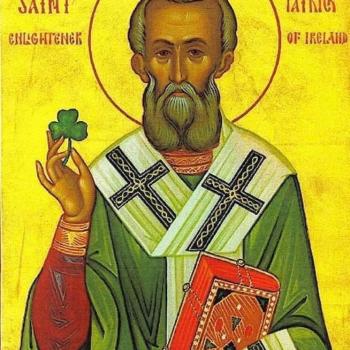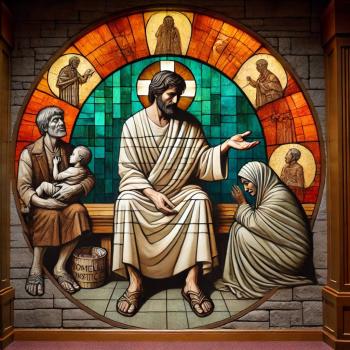The Creator is active in creation.
We can most closely connect to our Creator in creation – feeling the earth beneath our feet, running our hands through water, breathing deep the smells of a forest as the wind plays through the trees and leaves, while the sound of birds fills the air.
Ancient Celts recognized “thin” places where the physical word and spiritual world were closest together. These thin places are all around us, places where we can most easily connect with our Creator.
This is a tradition as ancient and rich as the Irish soil.
When Christianity traveled across the Roman world, it crossed the Channel, landed in Ireland and was immediately accepted by all who heard the story of Jesus.
Your Celtic ancestors recognized the Creator through the Spirit of Christ. Your ancestors knew instinctively that the God of Jesus was already among them.
The Celtic theologian Pelagius helped your ancestors see God in the world around them and in each other, because humanity was created in the image of God.
While Pelagius preached of the inherent goodness of humanity, created in the image of the Good Creator, his message wasn’t well received by church leaders in Rome.
Where Pelagius wrote about the goodness of people and finding God in nature, Augustine saw only inherent evil and original sin.
Augustine’s concept of original sin served Church leaders well — salvation and connection to God could only be found in the sacraments provided by the Church.
But the ever-present God of Genesis isn’t a God who can be contained in the Bible or controlled by Church hierarchy. So Pelagius and the Celtic understanding of God were excommunicated and banished, surviving only on the fringe of the faith.
This was the beginning of how the Catholic Church came to dominate Ireland and much of Christendom.
All of this makes Christianity in Ireland today, so … curious.
What happened?
Perhaps led by the Holy Spirit, I recently Googled Baptist churches in Ireland. I found the Association of Baptist Churches in Ireland:
According to the website, “each church in the Association affirms the following doctrines which are commonly believed among us:
“The verbal inspiration and total inerrancy of the Holy Scriptures of the Old and New Testaments as originally given by God; their sole-sufficiency and final authority in all matters of faith and practice.
“The creation of man in the image of God; the entrance of sin through Adam’s disobedience; the fallen and totally depraved state of all men; their subjection to God’s wrath and condemnation; their responsibility to repent and believe the Gospel.
“The church, the body of Christ, made up of those drawn from every tribe, language, people and nation throughout history who are added to it by the work of the Holy Spirit and the exercise of faith in the Lord Jesus Christ;
“…in separation from all systems of belief that do not adhere to the Scriptures and are unfaithful to the gospel of salvation by grace alone;”
The list goes on and on. And on.
Baptists don’t historically have so many doctrines, but this association certainly has a lot.
The doctrines talk about the Bible, Jesus, and the structure of churches, without once citing a Bible verse. Not one verse.
The tone of the websites of the association and the member churches is distinctly American evangelical.
Sadly, this view of the Association of Baptist Churches in Ireland (89 churches in Northern Ireland and 28 in the Republic of Ireland), as well as American evangelicals, is exactly wrong. Seeking to limit God to a book, a page, a room, a building or a denomination is an artificial, man-made effort, divorced of the Supernatural. And if God is anything, God is Supernatural.
Dedication to the Bible reduces the Creator to the pages of a book and moves us further from the presence of the Divine in nature, in ourselves and in others.
Does the God that created humming birds, the sound of a child’s laugh, and the deepest reaches of the cosmos really care if you read an approved translation of the Bible?

Speaking of translation, in Jewish scripture, God is repeatedly described as “I am.” But that translation can create an impression of permanence, or worse yet, stagnation. A better translation is “I am becoming” or “I am becoming what I am becoming.” This more accurately reflects scripture and it describes a God of creation and movement, more powerful than a building, book or denomination.
Like the changing seasons and the natural world, each of us is busy being born, growing, flourishing and decaying. Like God and the world, we aren’t created to remain unchanged like a church dogma, doctrine or creed.
This is the deeper message of the Bible and of the Celtic tradition — We were born to be reborn, to grow and flourish throughout every stage of life. We are to become, just like the God who created us.
This is the message of the Celtic Christian tradition. A message calling us to become who God created us to become. This is more important than any church or theology or interpretation of the Bible.
What are you waiting for?













